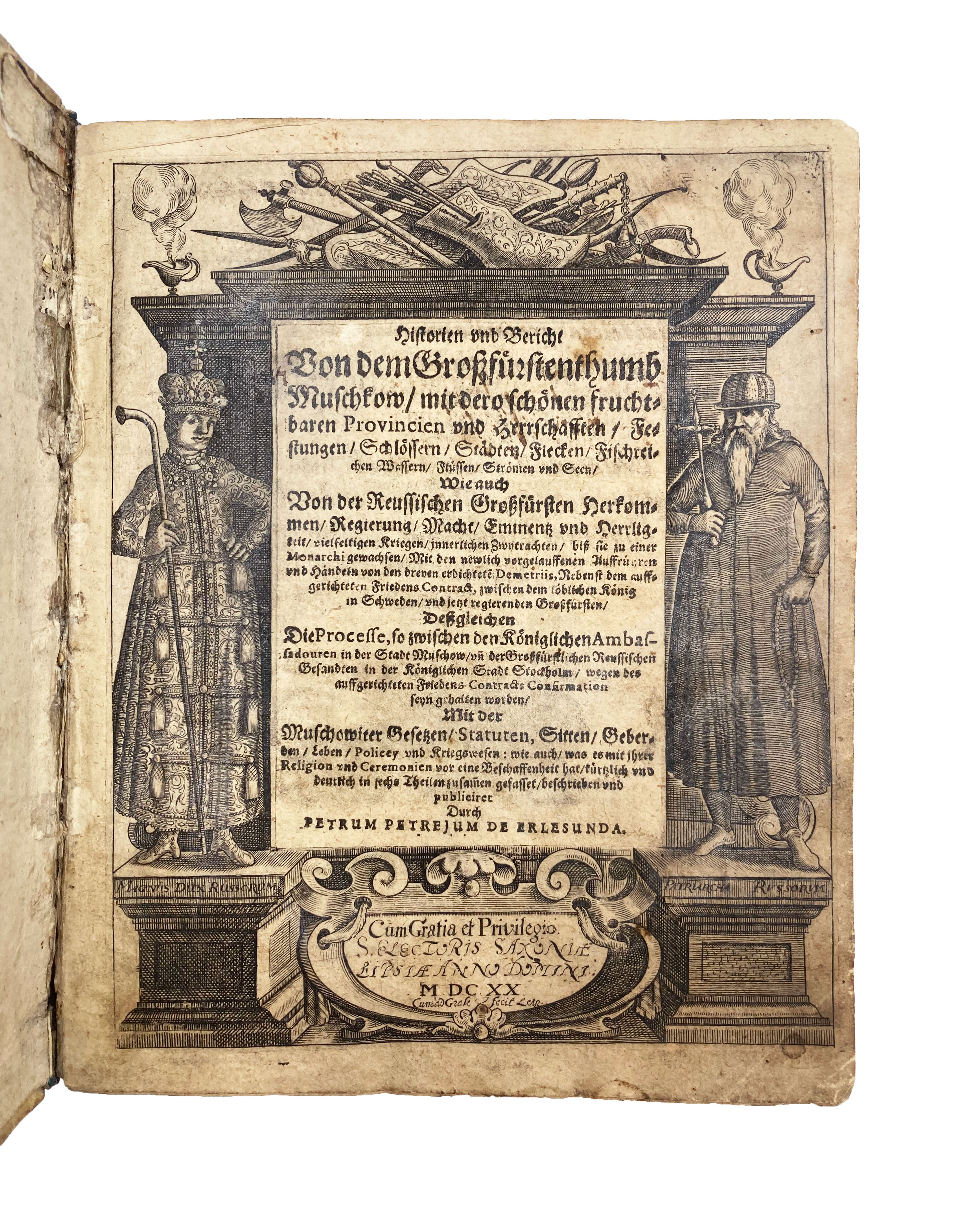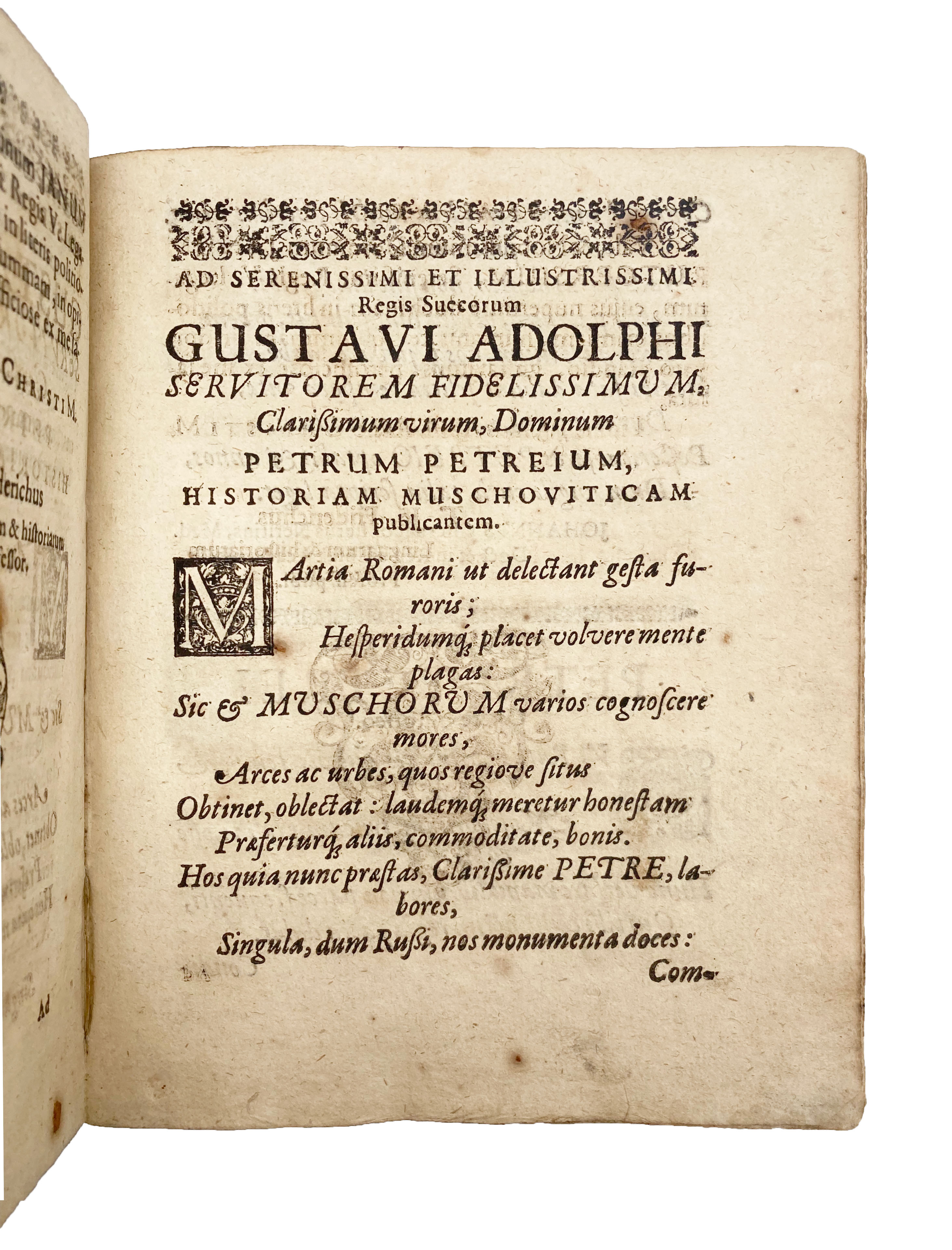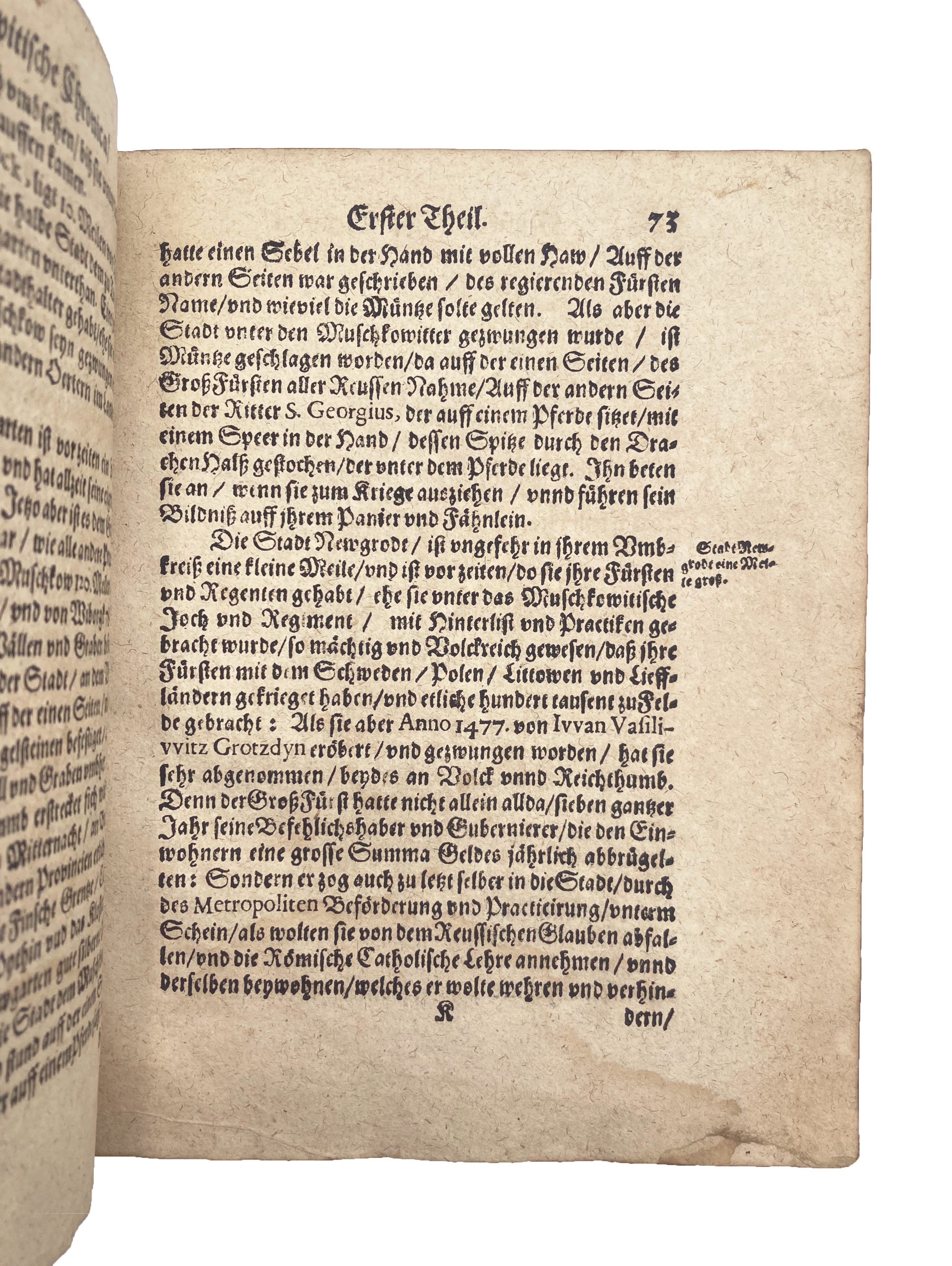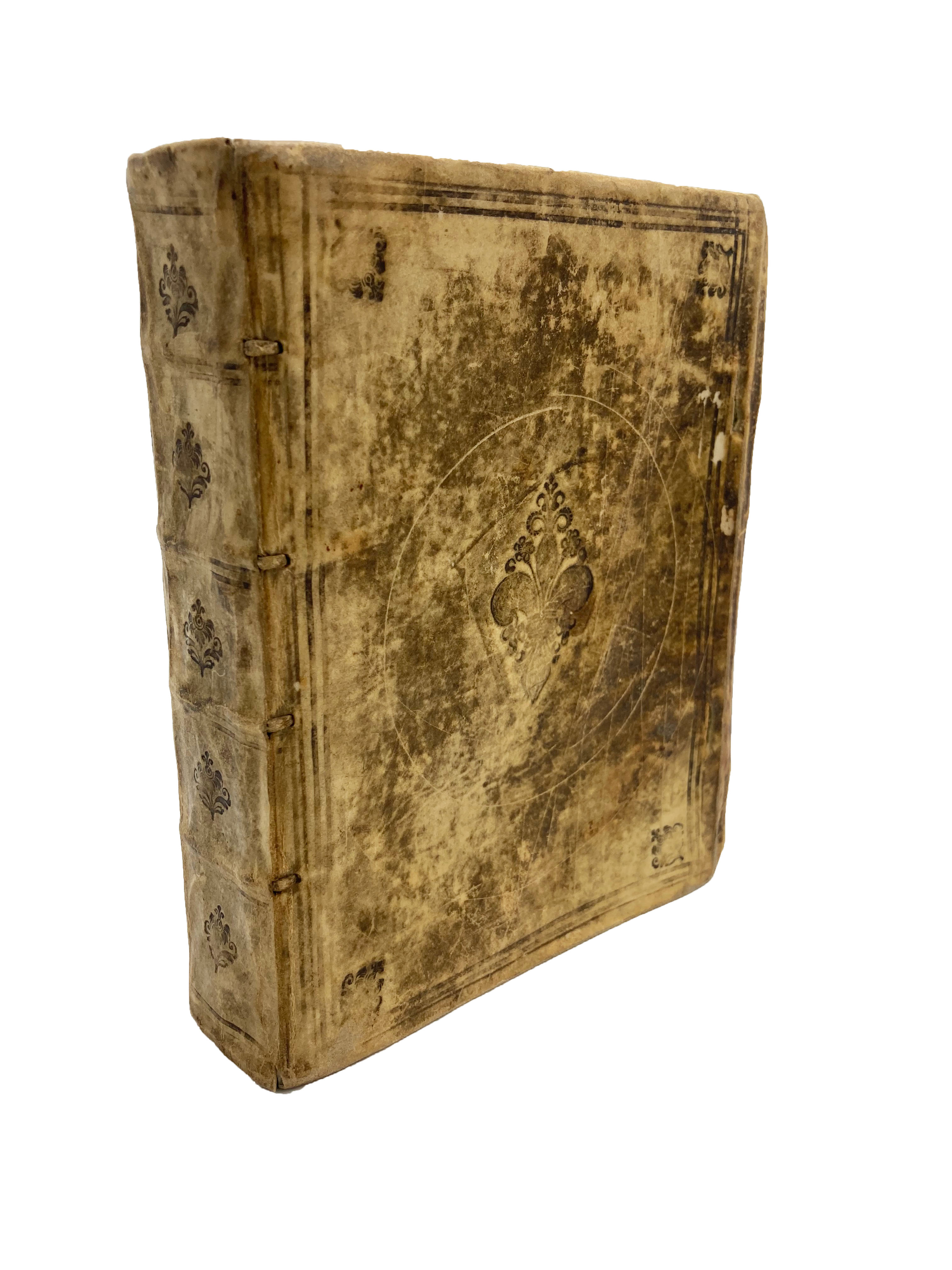PETREIUS, Petrus.
FIRST GERMAN ACCOUNT OF RUSSIA
Historien und Bericht von dem Grossfürstenthumb Muschkow
Leipzig, [ex Officina Bavarica], 1620£3,950.00
FIRST EDITION thus. 4to. pp. (xxii) 695 (i). Gothic letter. Charming engraved architectural t-p with standing figures of the emperor and patriarch of Russia, burning lamps, and Russian weapons; woodcut initials, headpieces, and typographical ornaments. General light browning, title a bit soiled, last leaf softened, light water stain at head and foot of last couple of gatherings. A good copy in contemporary vellum, lacking ties, double tooled (in black or oxidised silver), blind-stamped fleurons to inner corners, large blind-stamped fleuron to centre (upper board) and lozenge with interlacing ribbons (lower), blind-stamped fleurons to spine, small gauffered line towards headbands to upper and lower edge. Early autograph (illegible) to front pastedown, occasional slightly later ms marginalia, 4-line ms note (smudged) in a contemporary hand to rear pastedown, later bibliographical notes, and early auction price noted beneath.
Good first edition in German of a most influential C17 account of the duchy of Muscovy and the Russian provinces, with additional dedications and appendix. Petrus Petreius (Pers Persson) (1570-1620) was a Swedish diplomat and intelligencer from Uppsala, who worked for several years in Russia in the early C17 century. Petreius first published his account in Swedish, as ‘Regni Muschowitici Sciographia’ (Stockholm, 1615), marking a new attitude towards the perception of Russians in Sweden. The six parts are devoted to the cities and provinces, history (from Rurik to 1612), political ceremonies, warfare, customs, and religious
rites of Russia and its people. Most of the second part is concerned with the period spanning the reign of Boris Godunov and the start of the Romanov rule. Petreius relied heavily, especially for the section on the False Dimitris, on the yet unpublished Latin eyewitness account by Konrad Bussow. He interspersed it with personal observations based on direct experience, like the sight of the corpses of Fyodor II Borisovich and his mother bearing the imprint of the ropes which strangled them.
‘Historien und Bericht’ is of fundamental importance for early modern European first-hand knowledge of Russian culture. Petreius adapted for the German language words relating to Russian society, making them more accessible to his new readers by avoiding, unlike in the Swedish original, Russian borrowings. In his account, the complex meaning of the term ‘Bojar’ is simplified to the title of ‘nobleman’ (‘Adel’ or ‘Herr’), and ‘keysare’, the same term used to address the German Holy Roman Emperors, appears as a translation of ‘czar’
in the reported speeches of Russian people. The ‘Historien und Bericht’ was among the sources used by I.M. Karamzin for his famous ‘History of the Russian State’ (‘История Государства Российского’) of 1843.






